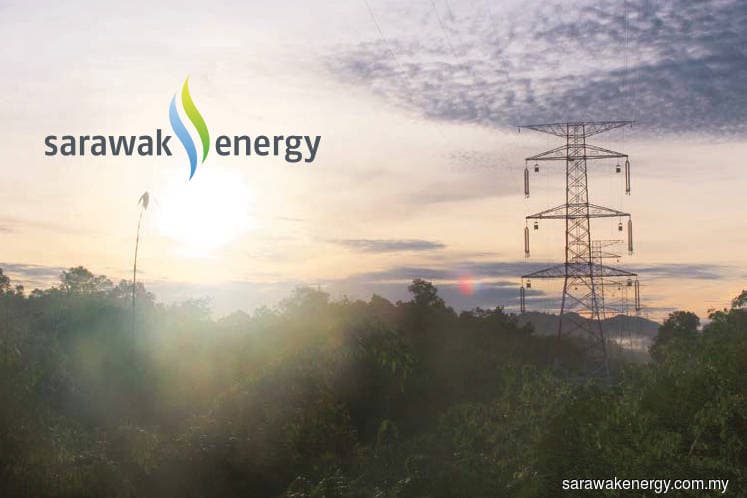
This article first appeared in The Edge Malaysia Weekly on September 18, 2017 - September 24, 2017
SINCE its delisting in 2009, Sarawak Energy Bhd (SEB) has grown rapidly. Installed capacity rose from 1,300mw to 4,628mw and its workforce grew 51% to 4,800 employees.
The rapid expansion has benefited listed players — including cement supplier Cahya Mata Sarawak Bhd, cable and wire producer Sarawak Cable Bhd and engineering firm Pestech International Bhd — through contracts and jobs.
And SEB is still growing — the target is to reach 7,000mw of installed capacity by 2025. New CEO Sharbini Suhaili says his mandate is to ensure SEB can sustain its rapid expansion plans.
“SEB is doing quite well. The key thing [the board] wanted me to do is to make this company even better,” the CEO says. “The challenge for me is to set up a very clear vision that everybody works towards … and sustain this growth.”
To achieve that by 2020, he has rolled out a strategic road map focusing on five key areas of excellence: (i) health and safety; (ii) operations; (iii) project delivery; and (iv) talent management; which would then converge into (v) a high-performance culture.
Sharbini says he inherited a company with good foundations and a strong management team. However, he also identified room for improvement, such as a “big gap” between the senior management and the next level of employees.
“That means we have not been developing our people fast enough and well enough,” he says.
Part of the underlying objective of the road map is to improve financial discipline throughout the organisation. Sharbini has set a target of RM44 million in savings on operational expenditure this year.
“I know it’s small, but it creates the discipline,” he says. “And in an organisation that is growing and doing well financially, it’s not easy to get that done because people are not focused on that.”
Financially, SEB has an inherent cost advantage — about three-quarters of its generation mix is hydropower, which is generally the cheapest to produce, but it is capital-intensive.
The lower generation cost from Murum and Bakun dams helped SEB reduce tariffs in 2015, says Sharbini. He estimates the financial impact of the reductions to be RM80 million to RM100 million.
The reductions slashed monthly bills for domestic customers by up to 47% while commercial and industrial customers saw reductions of up to 50% and 40% respectively.
In return, the state government exempted SEB from paying dividends from 2015 to 2020, subject to revision and based on mutual understanding. In 2014, it paid RM142.7 million in net dividends.
No hurry to relist
Another area on Sharbini’s radar screen is reliability of electricity supply, measured by the System Average Interruption Duration Index (SAIDI), which indicates average outage per customer annually.
From 2014 to 2015, SEB’s SAIDI figure fell 23.8% and hit 125 minutes in 2016. In comparison, Tenaga Nasional Bhd’s SAIDI figure in 2016 was 49.7 minutes. A general benchmark for developed countries is 50 minutes.
“The challenge for me is how to bring it down further,” says Sharbini, adding that the target now is 60 minutes.
He acknowledges that it is a challenging target — Sarawak is nearly the same size as Peninsular Malaysia with some customers in extremely remote locations, which complicates rectification works during outages.
An even bigger challenge, however, seems to be SEB’s pursuit of a healthier workforce, the CEO quips.
He explains that to promote a healthier lifestyle, the company will start weighing its employees next month to look at body mass index (BMI) figures. SEB is also asking volunteers to take sugar and cholesterol tests aimed at obtaining statistics.
“Nobody complained about the SAIDI target, (but) everybody complained about the BMI,” he laughs.
So once the company is sufficiently stronger, will SEB relist on Bursa Malaysia?
Light-heartedly, he says many people have asked him the same question as they are keen to invest in the company.
“It is something that we discuss, but not something that we have any time frame for,” Sharbini says. “The thing is, is it something that we need now?”
The question arises when SEB is digesting the Bakun acquisition and exploring new growth areas beyond expanding domestically and growing exports.
Sharbini envisions the next step to be undertaking hydropower projects overseas as a power developer, possibly via equity participation. He adds that SEB has been looking at Kalimantan in Indonesia and Myanmar for starters, but things remain preliminary at the moment.
“These are at the very early stages. We are just looking to see what is there. If we can realise these, it will be one for the future,” he adds. “If we were to suddenly find some big opportunities, maybe we will do that [list the company].”
Save by subscribing to us for your print and/or digital copy.
P/S: The Edge is also available on Apple's AppStore and Androids' Google Play.